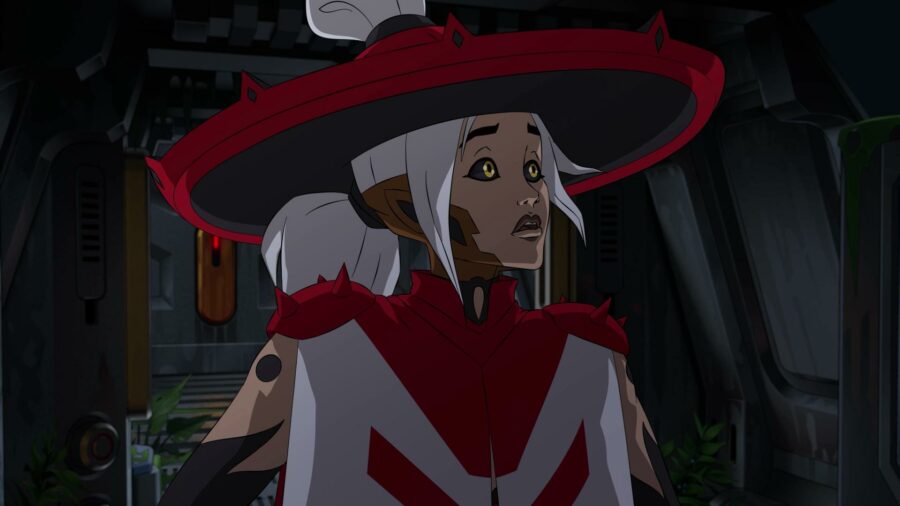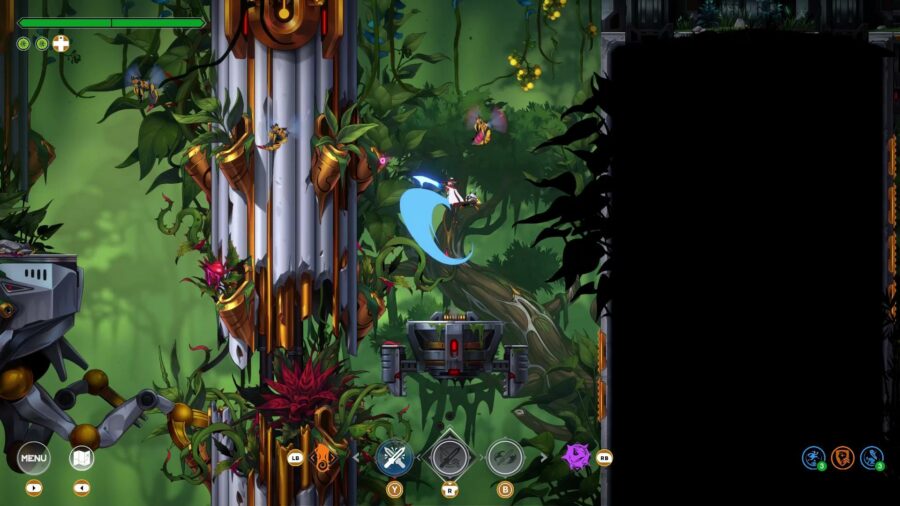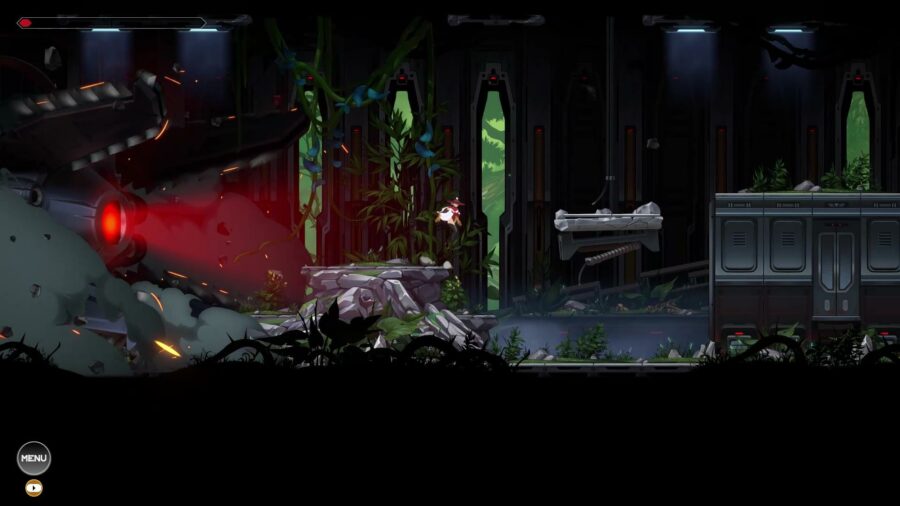One of my favorite types of B-movies is when the creators clearly didn’t bother to do any research on filmmaking before they started. No books were read and no questions were asked; every time these people hit one of the thousand problems that crop up on a film set, they freestyled their solution. Sometimes that results in a flash of genius. More often, someone finds a way to either make new mistakes or unearth old ones.
In retrospect, this is a natural consequence whenever some new media technology becomes accessible to any geek off the street. Eventually it’ll fall into the hands of a driven amateur and the results can get a little weird, independently of the quality of the production.
Speaking of which—INAYAH: Life After Gods is a new 2D action-platformer from the (I assume to be) German developer Exogenesis Studios, which funded INAYAH’s development via a successful Kickstarter in 2024.
According to Exogenesis’ bio, the team includes several unidentified “international game and software development veterans” who previously worked on Rogue Trader and Pathfinder: Wrath of the Righteous, as well as a team of artists with experience at Blizzard and Disney.
That’s a stacked lineup for a game that still turned out distinctly off-kilter. INAYAH looks great, has multiple useful quality-of-life features, and is set in a colorful, memorable post-apocalyptic world. However, it’s also plagued by a bunch of mechanical issues that drag down the whole.

Inayah is one of a handful of survivors who live in the ruins of an ancient civilization, which fell so long ago that its creators are viewed by modern humans as dead, unknowable gods. Inayah’s world is full of crumbling tunnels, half-functioning machines nicknamed “iron,” and hostile, mutated plant life.
While exploring the ruins one day, Inayah accidentally reactivates a subway car that carries her to a distant part of the ruins. She quickly discovers that she’s in hostile territory, as the ruins are home to the Ironskins, a band of marauders that orphaned her as a child. They also hold ancient weapons, as well as clues that could lead her to the family she never got the chance to know.
Like Awaken: Astral Blade, INAYAH is a 2D action/platformer that’s got a lot in common with both Metroid and Dark Souls. (I’ve started to feel slightly silly about using terms like “Soulslike” and “Metroidvania,” as they don’t make sense to anyone outside the hobby.) You’re dropped off at one point in a sprawling maze of tunnels and are largely left to explore. As you defeat mutants, you pick up currency that can be spent on upgrades, many of which improve your mobility so you can explore previously inaccessible parts of the map.
You initially get the chance to choose one of 3 weapons, each of which have their own upgrade tree and offer a couple of unique offensive and defensive options. The twin swords let you parry attacks and perform a Zelda II-style up- and downthrust; the fists give you a defensive shield, the ability to climb up certain walls, and an eight-way air dash; and the flail can knock down walls or latch onto magnetic points in the environment.

You’ll eventually unlock access to all 3 at once, which is an interesting overall approach to the formula. Instead of having a traditional double-jump, INAYAH sets you up with some freeform platforming challenges, where you can string your various abilities together to reach new locations. It’s flexible, and the upgrade trees give you a lot of options for customizing your overall approach to both exploration and combat.
However, that also ties into the single biggest problem with INAYAH: it doesn’t convey information to the player very well. It does have a short, basic tutorial that lasts up to the point where you get your first weapon, but you’re never informed about your later movement options or the existence of the upgrade tree. I spent the first hour of the game collecting currency, wondering when I’d get to spend it, then noticed the option to do so had quietly appeared in my pause menu.
The same issue extends to the environments. INAYAH has some incredible art, with an overall style that reminds me of post-apocalyptic stories from Heavy Metal. It’s beautiful, but it’s often difficult to tell at a glance whether something in the environment is meant to be interactive. Whenever I’ve gotten stuck in INAYAH, it’s been because I thought part of the background was a wall or a usable ledge, or because I was supposed to be using new movement options that the game didn’t tell me I had.
It’s the sort of problem that I’ve come to associate with animators or TV producers who pivot to game design. They often create some spectacular visuals or tell an interesting story, but they don’t pay anywhere near as much attention to the mechanics. The result is a game that looks great, but often has a few old mistakes in the mix.

That relegates INAYAH: Life After Gods to the “good effort” pile. It’s a significant achievement as a piece of media, but it’s a significantly flawed video game. I want to like it more than I do, as there’s some real love and effort on display. If its creators get the chance to patch out some of its issues (i.e. outlining or color-shifting interactive objects so they’re easier to see), it could be a decent pickup, but it’s hard to recommend in its current state.
[INAYAH: Life After Gods, developed by Exogenesis Studios and published by Headup, is now available for PC via Steam and Itch.io for $24.99. This column was written using a Steam code sent to Hard Drive by a PR representative for Headup.]
—-
A brief follow-up:
This column marks the end of Game Night’s first year. I pitched this on a random whim, and am sort of surprised it was allowed to go on for this long. I’d be happy to do this for years to come, or until the nation burns down around me, whichever comes first.
In the meantime, thanks for reading, and here’s to a second year of weekly indie games.




